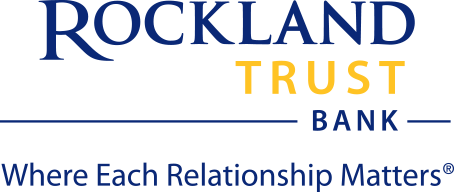Written by Steve Andrews

The fireworks are over and we’re off into the second half of the year. Hopefully, it will mimic the first half, whose performance confounded many who had expected that we would be in the midst of a recession by now. Yet, despite tepid economic growth, the economy hasn’t faltered. After several revisions, it was determined that Q1 GDP grew 2.0%, following a 2.6% rise in Q4 2022. With most of the June data compiled, Q2 seems on track to have grown close to 2.0% once again. This better-than-expected performance has lifted US stocks over 22% from last October and differs dramatically from the first half of 2022 when stocks fell 20% and Treasuries lost 10% of their value.
Consumers Driving Economic Growth
The US consumer remains a driving force in keeping the US economy upright. They have been supported by a strong labor market, which has kept wage growth close to rising prices for the better part of the past 12 months. How long that lasts remains to be seen, but household balance sheets are strong with relatively low debt levels and above-trend savings to cushion a pullback in the labor markets. A look at the Fed’s Q1 report on Household Net Worth showed that Baby Boomers had $74.8 trillion in net worth at the end of Q1-2023 and they are spending some of it. There are 58 million Boomers over the age of 65, and over 11 million of them are still working. Meanwhile, GenX’ers have about $40 trillion in net worth, and Millennials just under $8T, and they are still accumulating wealth. Over the past 12 months, spending on services is up 8.0% while spending on goods is up 2.2%.
The rate of job growth is easing slightly but the “quit” rate rose above 4 million in May for the first time since December as workers see jobs as plentiful (US job openings have been straddling either side of 10 million since Q4 of last year). We have seen a few jumps in new weekly unemployment claims, but the number of people receiving ongoing unemployment benefits hasn’t changed much.
Optimism in the Housing Market
If the US housing market was in a recession, it appears to have put it in the rearview mirror. With June data due soon, New Home Sales jumped 12.2% in May to the fastest pace in over a year, as the dearth of existing homes for sale continues to drive buyers to new homes. The median new home sales price has fallen over 16% from the end of 2022 which has helped to offset the headwinds from higher mortgage rates. The drop in the median price has been aided by an increase in the supply of new homes which has doubled to 6.7 months’ worth since we emerged from the pandemic. Meanwhile, the number of completed homes has also doubled over the past 12 months as builders recover from supply issues and construction hiring rises.
Other Industry Surges
While housing seems to be on the rebound, manufacturing and power construction is also seeing a surge in building as federal programs, like the CHIPS act, are stimulating activity. Manufacturing’s share of non-residential construction has nearly doubled from around 15% in early 2020 to nearly 30% today. Still, US manufacturers overshot production goals as they hustled and overproduced to battle back from supply chain woes just as consumers shifted spending patterns from buying hard goods while housebound during the pandemic, to spending on services (travel, entertainment, etc.) once they were set free to roam. The service sector continues to run hot, and subsets like new orders and business activity point to more services growth in the months ahead.
Feelings from the Fed
Where does this leave the Fed? After keeping short rates unchanged at the June FOMC meeting, and then increasing them earlier this week, the Fed may still expect a mild recession later this year, with negative GDP growth due in Q4 and Q1 2024. However, they also added that it was equally possible that the economy could avoid a recession and they see PCE inflation ending the year at 3.0%, with core PCE at 3.7%. In addition, they believe housing inflation has peaked and will trend lower in coming quarters, pulling core PCE closer to its 2.0% target next year. They also expressed uncertainty about their outlook for the economy, saying that their concerns over the effects of the recent banking crisis on lending may have been overstated. While it might appear that they are talking out of both sides of their mouths, from where we sit, it’s their way of saying that they will remain data-dependent and will react appropriately as more economic data becomes available.
On that matter, the Fed’s monthly report on the US money supply (M2) for May showed that, for the first time in 9 months, M2 grew - up $212 billion. Despite the increase, M2 is down 4% from May 2022 and has grown less than 1% since May 2021. In the 30 years prior to COVID, when we enjoyed minimal inflation, M2 growth averaged 6.1% per annum. During the pandemic it surged 40% (or $6 trillion) but, thus far, about $3.4 trillion of that has been “soaked up” by economic growth, a strong US Dollar (USD), and global demand for Dollars at a time when the supply of money has been shrinking. Higher rates have helped too, as people are more inclined to save when they are getting 5% interest than they were when they were getting near zero. This has been a key factor in the disinflationary trend over the past six months and we expect to see continued disinflation as the source of inflation (M2) dries up, even as the year-over-year inflation data lags what’s happening today.
Both consumer prices (CPI) and producer prices (PPI) continued to moderate in June with CPI up 3.0% and PPI up just 1.1% from year-ago levels. CPI includes housing (rents) which is why it remains higher than PPI, but even the Fed is ignoring housing costs as they parse through inflation data. That’s why market expectations see the Fed backing off from their tough stance following the recent July rate increase.
In Conclusion
Over the past 15 months, the Fed has upset investor sentiment like a skunk at a picnic, so the market sees disinflation and tepid economic growth nudging the Fed to the sidelines. The resulting relief factor has brought stocks back from their October 2022 lows with the S&P 500 recently touching its July 2022 high. Despite the uncertainty, with the Fed easing its way out of the limelight, new technologies like biotech, robotics, artificial intelligence, and nanotechnologies that offer the promise of giant leaps in productivity return to the forefront. These technologies have continued to develop while most of the markets’ attention has been focused on recession watch. We’re not projecting an economic boom, but the next six months look a lot brighter than they did just a few months ago.





